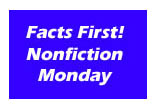
Kids of Kabul: Living Bravely Through a Never-Ending War by Deborah Ellis

Deborah Ellis, acclaimed author of the Breadwinner trilogy, writes about the lives of children in Afghanistan once more, but this time, the stories are about real children who she has met during her many visits to Afghanistan. A noted activist, Ellis has had a particular focus on the welfare of the women and children of Afghanistan since the takeover of the Taliban in 1996. She begins Kids of Kabul with a personal introduction, explaining a bit about the history of modern Afghanistan, the work that she has done to advocate and assist women and children who have suffered under the rule of the Taliban and her process for interviewing the children and teens featured in the book. A two-page spread of maps helps to denote Afghanistan's geographic location within the world and within the Middle East. The body of the book features first-person accounts of life in Afghanistan. Most start with a photo of the child and all include a brief introduction to some aspect of Afghani life (education, art, child labor, social services, etc.) to contextualize the child's story. The interviews, which Ellis performed in person in Kabul through the help of a translator, are written as straight narratives, though it is easy for the reader to tell both where/when a new question was asked and roughly what it was. Ellis concludes with an "About Afghanistan" section, resources for further information, and glossary.
Almost every kid Ellis interviewed had lost one or both parents to disease, lack of medical care, or Taliban violence. Despite this, and despite the poverty, general lack of resources or sense of personal safety, all of the children aspired to a bright future, free from war and filled with education and opportunity. Many referenced how the Taliban represented the "old way" of thinking, and how when their generation assumes control of the government and business, things will be better. Their optimism and commitment to working to build a better Afghanistan was what held their interest, not their current challenges or past losses. Their stories left me inspired and awed at the capacity of the human spirit to forgive (or at least forget) and work diligently for the future. And they have so far to go. Their words are the heart and soul of this book.
What irked me - and it irked me even more because I thought the meat of the book was so powerfully moving and educational at the same time - were some of the structural choices in this book. For example, at least two times in the personal narratives, children mention "toshaks." Instead of editing to put the word in context, contextualizing it in parentheses, inserting a an asterisk with a footnote or bolding the word to indicate the definition could be found in the glossary, the narrative kept moving along with no regard to unusual vocabulary. This happened with many unfamiliar Aghani/Muslim words. Can I also complain about the grainy black and white photos? I usually advocate for photos to appear alongside the text to which they refer, but in this case, I wanted to see the photos in color, and would have preferred a center section of glossy photo pages over the hard to see images that were incorporated into the narratives. The bigger of my disappointments, however, was the placement of the "About Afghanistan" section. I wrote a term paper about women in Afghanistan during my freshman year of college in 1998, and I've been a news-consuming adult for the past many years. With this context, I was able to jump right into the book and follow along. It will not be so easy for the young readers that are the audience for this book. The "About Afghanistan" section should have been placed at the front of the book, right after the maps, where it is more likely to be read and more likely to serve its purpose of providing a small amount of context (and perhaps some emotional preparation) for the stories you are about to read. My hope is that when teachers do use this book with students, they will skip to the end and then head back to the beginning.
So I loved it. And it bothered me. It inspired me and made me feel thankful for the freedoms I was born into as an American. It left me wishing it had done a better job at structural/organizational things, so that I could wholeheartedly say what a fantastic introduction this book is into the lives of children in Afghanistan. Don't get me wrong, I'll still be directing several students who are doing year-long reading projects on "children in war" to read this book. I'll just tell them to read the last part first, and note the existence of the glossary.
The LibrariYAn is an Amazon Associate. If you click from links on this blog to Amazon and buy something (anything!), I receive a small percentage of the purchase price.
No comments:
Post a Comment